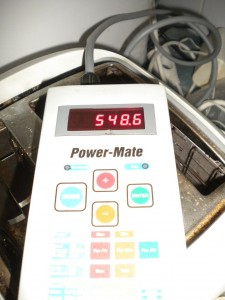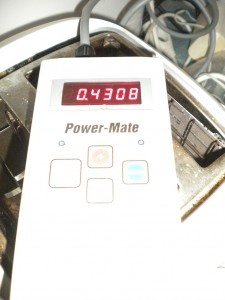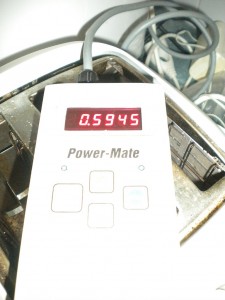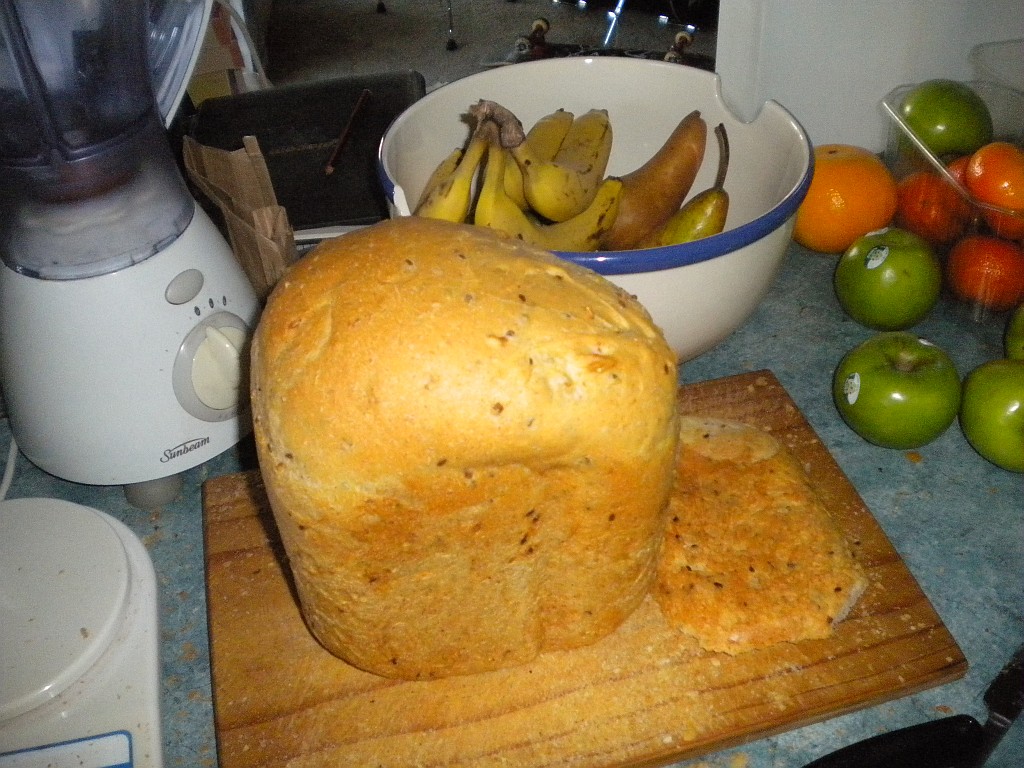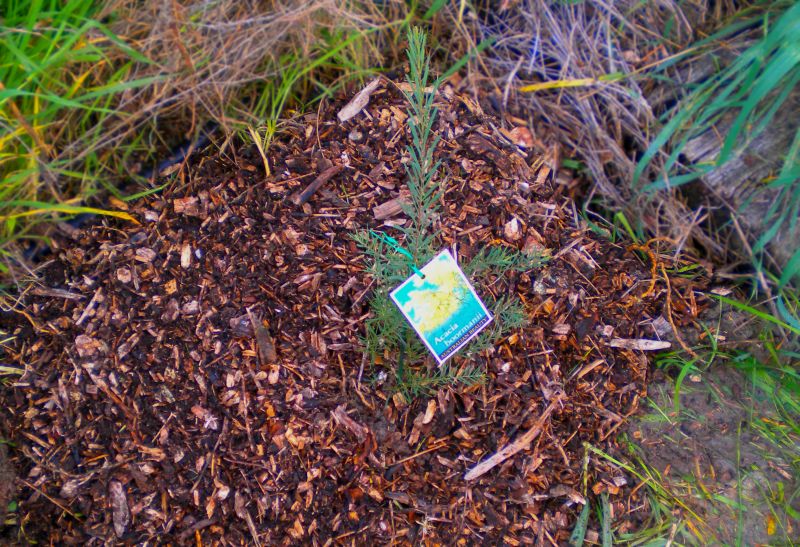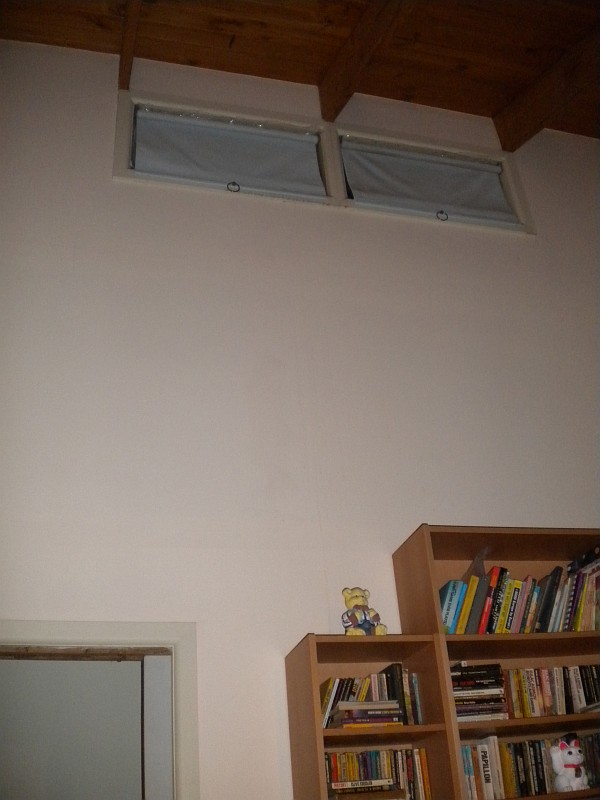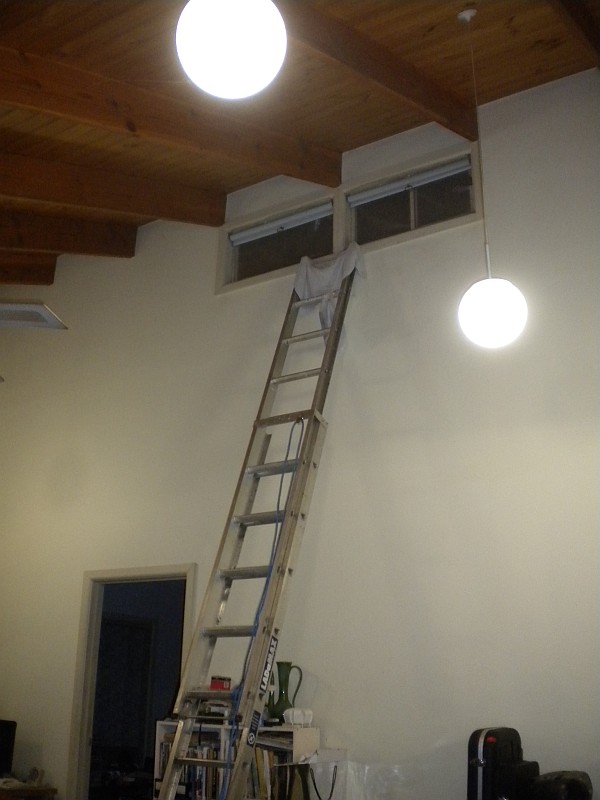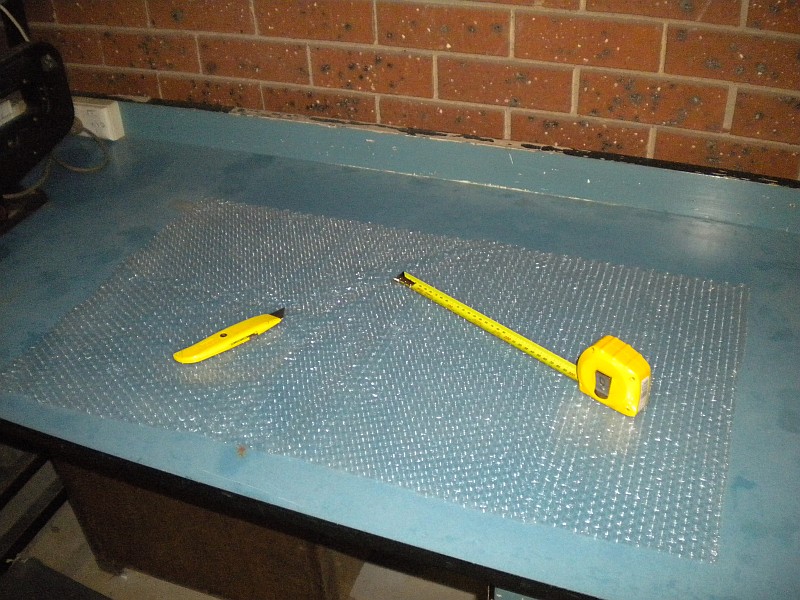It’s been a while since I posted as I’ve been a bit ill for a few weeks but all better now. One of things that happens of course, is that projects get put on hold until you’re back on your feet. Just before I got sick I was putting together parts for my bee hives in preparation for getting my first lot of bees. I had started to construct the frames that go inside the hive and which the bees use to build the honeycomb. Once I was feeling better I completed enough frames to get two hives started and I thought I should get the rest of the components together in preparation for establishing the two new hives.
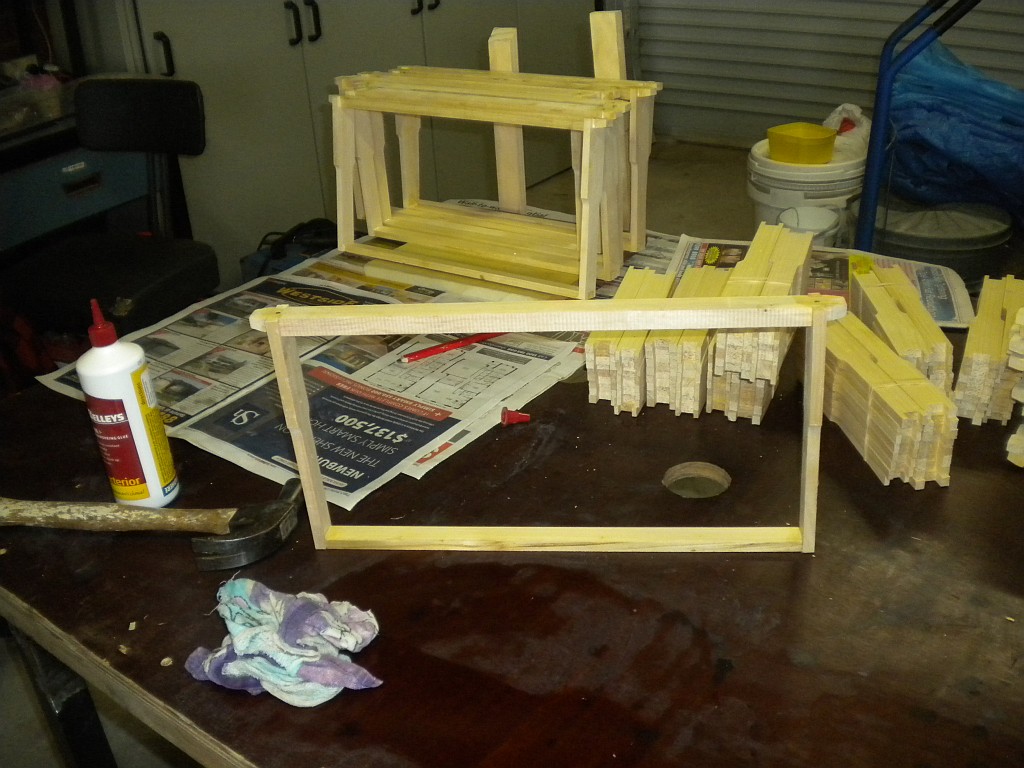
Constructing the wooden frames
The frames are assembled with glue and nails using precut pieces made from hoop pine or similar types of wood. Once you get a system going you can knock these out pretty quickly which is just as well as I need a minimum of sixty-four frames for two hives.

Inserting the wire to support the wax honeycomb
The frames are wired using stainless steel (or galvanised) wire to support the wax honeycomb. Once the wire is threaded through using the homemade jig (based on some existing designs), it is tensioned and tied off on the side of the frame. When the frame is made and tensioned correctly it should be able to be plucked like a harp (although without the pleasing sound).
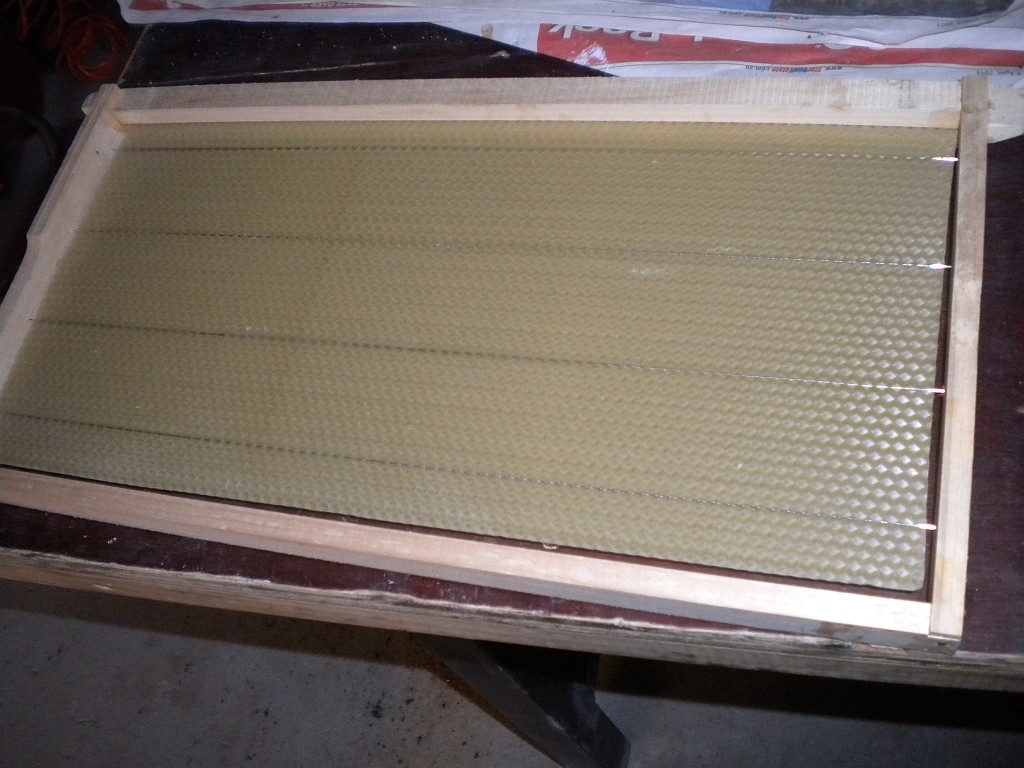
Finally the wax foundation is melted onto the wires using another homemade tool that heats the wire using an electric current. This foundation provides a base for the bees to build the honeycomb and reduces the time and effort it takes (producing wax takes a lot out of the bees) so that the bees have more energy to devote to hive maintenence and honey production.
I started putting together the beekeeping stuff this week including getting the materials to build the top and bottom of the hives today, ready for splitting one of the hives in two or three weeks. It was going to be a relaxing day doing a bit a woodwork and gathering some other materials.
Well yesterday evening the bees decided to take matters into their own hands (feet?) and I found a swarm on one of the trees in the backyard when I went to lock up the chooks. So I had to rush in to the shed and quickly build a top and bottom and set up a hive next to the swarm last night in the dark to, hopefully, attract them. Time will tell…waiting, waiting waiting!
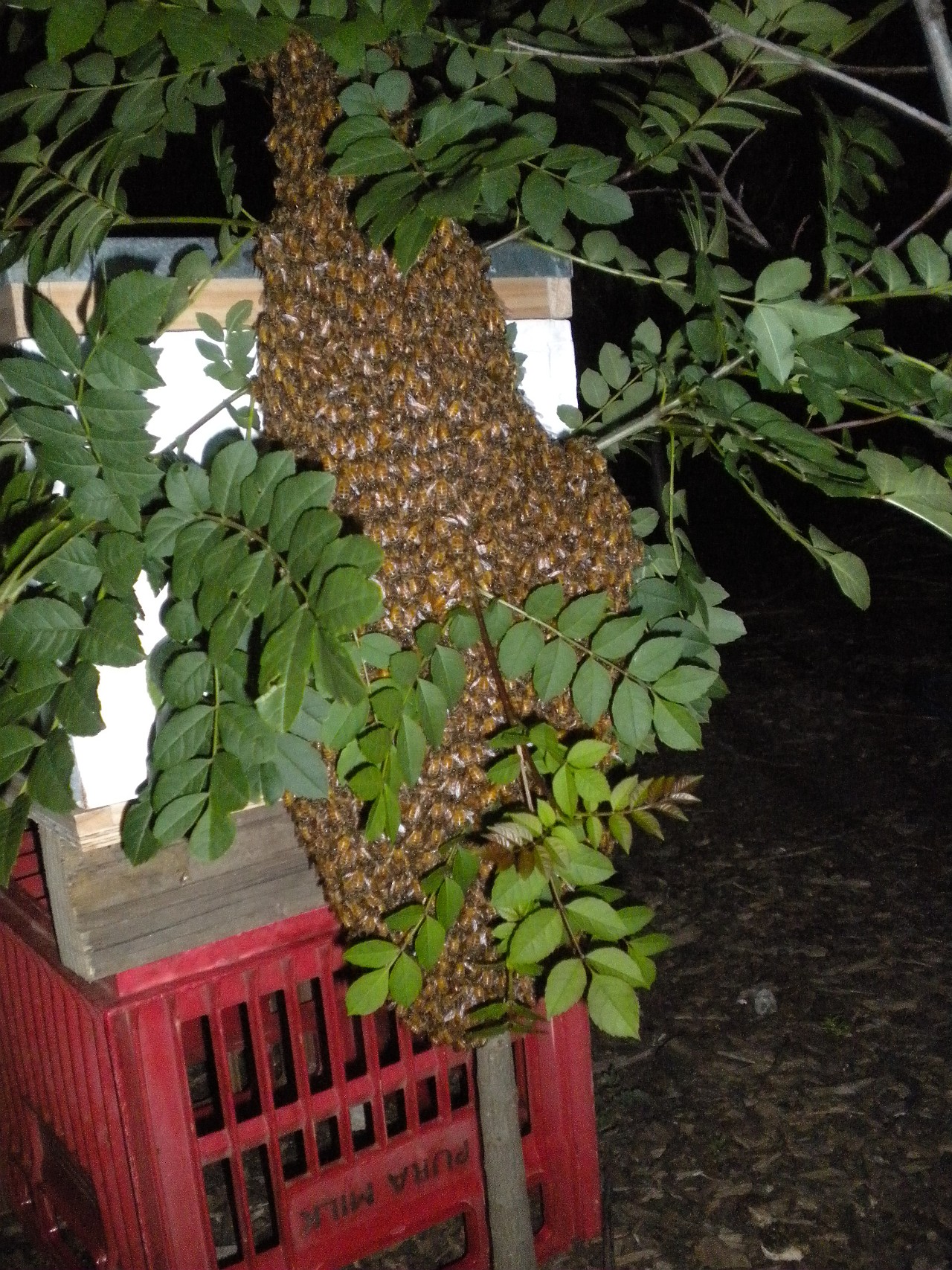 When bees swarm the queen and half the workers leave the existing hive to find new accomodation. The workers left behind rear some new queens who then fight for the top spot and eventually all the bees in the colony are children of the new queen and the hive will have slightly different characteristics. So if you don’t want to lose the existing queen and the characteristics of the hive it is important that you can entice the swarm into a new hive.
When bees swarm the queen and half the workers leave the existing hive to find new accomodation. The workers left behind rear some new queens who then fight for the top spot and eventually all the bees in the colony are children of the new queen and the hive will have slightly different characteristics. So if you don’t want to lose the existing queen and the characteristics of the hive it is important that you can entice the swarm into a new hive.
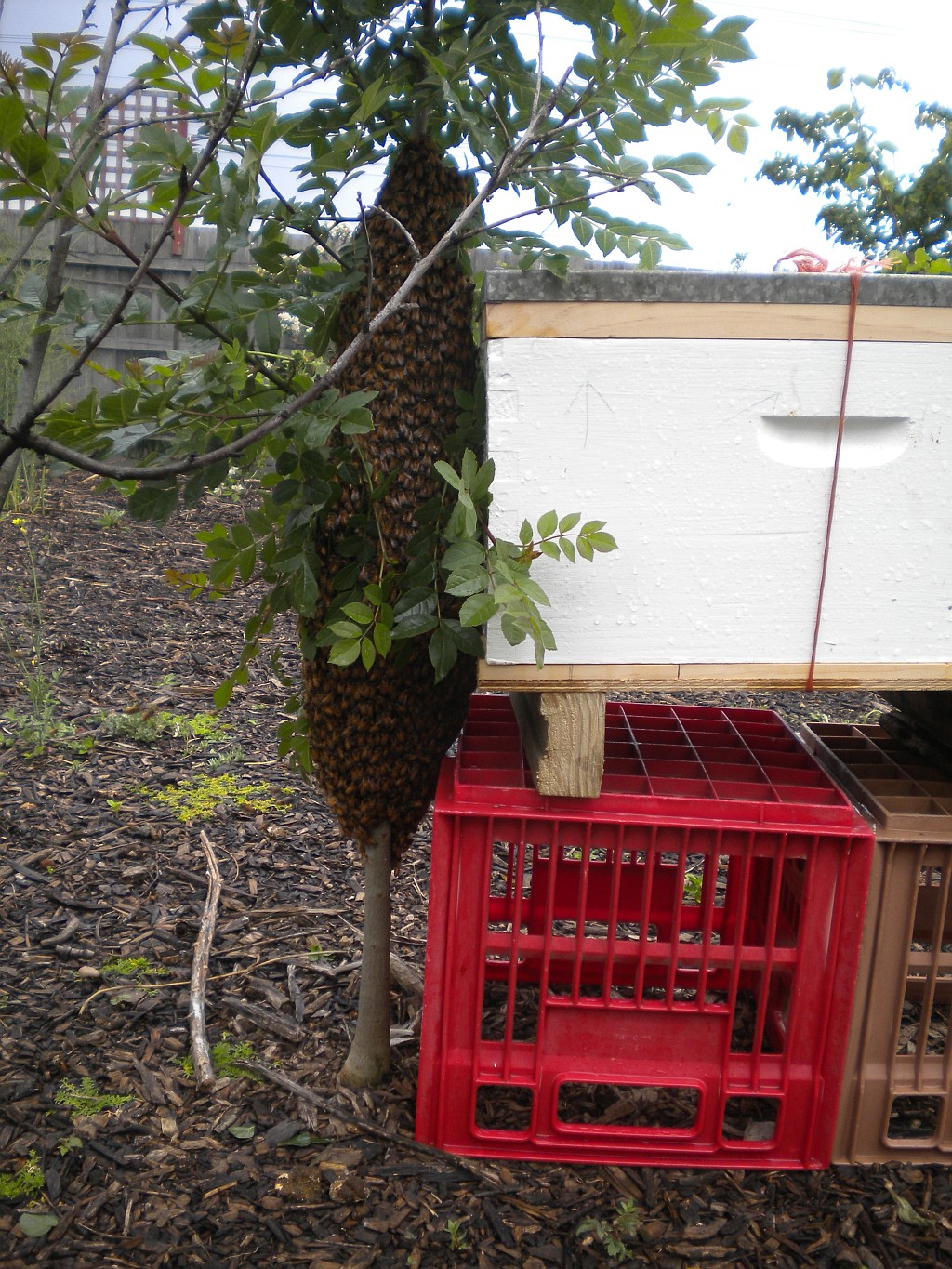 This morning the swarm was still there, seemingly indifferent to the hive placed so conveniently against it. It is a very frustrating time. We don’t want to lose this swarm as the queen is a very good queen and the bees are very docile.
This morning the swarm was still there, seemingly indifferent to the hive placed so conveniently against it. It is a very frustrating time. We don’t want to lose this swarm as the queen is a very good queen and the bees are very docile.
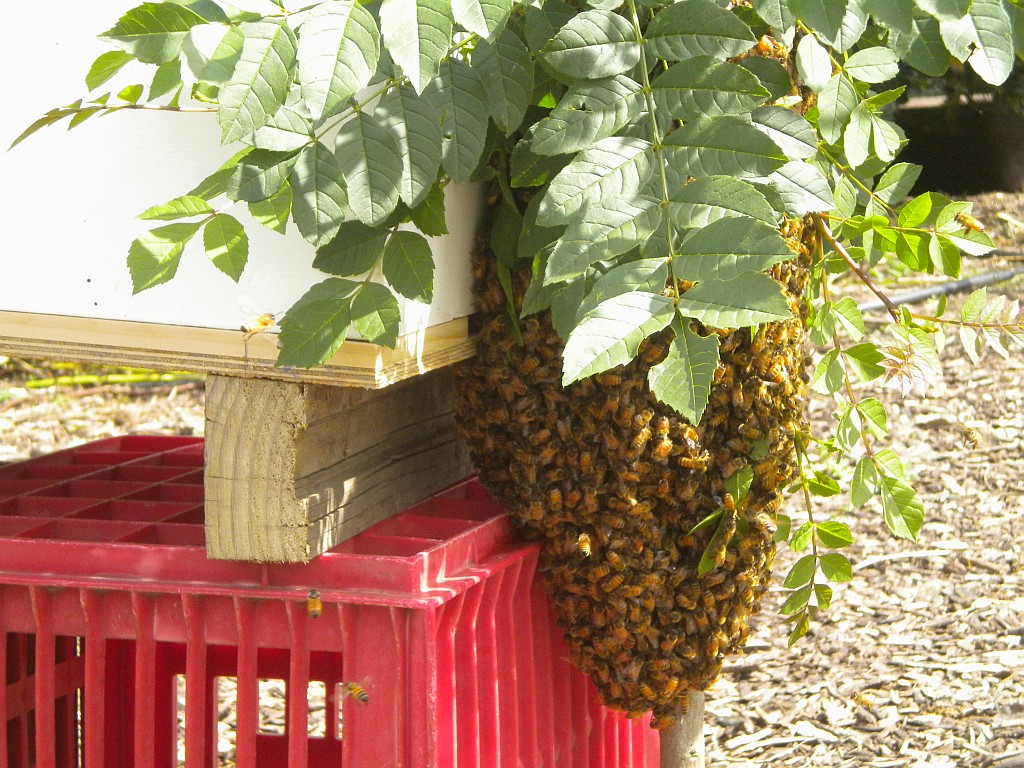 A bit later on this morning, I checked again and bees were definitely making their way into the hive and looking around, but the swarm doesn’t appear to be getting much smaller. Fingers crossed!
A bit later on this morning, I checked again and bees were definitely making their way into the hive and looking around, but the swarm doesn’t appear to be getting much smaller. Fingers crossed!
UPDATE
After another night and morning of frustration waiting for the bees to move into the hive, I prepared a sugar syrup whcih was dizzled into the back of the hive to try a caox them in. There was a lot of activity with bees enetering the hive looking for the syrup. However, there was still no real movement into the hive.
I was weeding not far from the swarm this afternoon, when suddenly there was a load roaring buzzing noise and I looked around and discovered I was surrounded by thousands of circling bees!
What an experience! I ducked down and moved away (through the cloud of bees) and called my friend who is helping me set up my hives and let him know. We were both very disappointed as I gave him a commentary on the flight of the bees across the ring road and out of site.
One to two more weeks and we would have already split the hive but, as they say, it was not to bee!
(yes, I know)!
Oh well, we will inspect all the hives on Monday and see what the status is and make a decsion about how to best start my hives from this point.
It certainly has been an interesting experience so far 🙂








